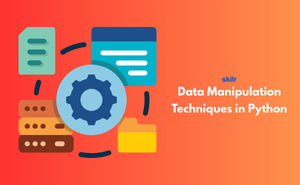👇 CELEBRATE CLOUD SECURITY DAY 👇
00
HOURS
00
MINUTES
00
SECONDS

Python Data Manipulation is all about adjusting and restructuring data so it works better for analysis. Real-world data often comes incomplete, duplicated, or in a confusing layout. By using Python tools, professionals can clean up errors, combine multiple sources, reformat columns, and highlight the most important details. This makes the information ready for advanced tasks like visualization, reporting, or AI-based predictions.
To put it simply, it’s like tidying up a kitchen pantry. Instead of having random ingredients thrown around, you sort them into jars, label them, and keep them in order. Python does the same for data—helping people find patterns, solve problems, and make smarter decisions with clarity.
This exam is ideal for:
Industry-endorsed certificates to strengthen your career profile.
Start learning immediately with digital materials, no delays.
Practice until you’re fully confident, at no additional charge.
Study anytime, anywhere, on laptop, tablet, or smartphone.
Courses and practice exams developed by qualified professionals.
Support available round the clock whenever you need help.
Easy-to-follow content with practice exams and assessments.
Join a global community of professionals advancing their skills.
Yes, a basic understanding of Python is helpful.
Filtering, merging, reshaping, grouping, and aggregating data.
Yes, because machine learning models require clean, structured data to work well.
Absolutely—Data Manipulation Techniques in Python certification is designed to be beginner-friendly.
Pandas and NumPy are the most popular, along with some specialized libraries.
Because raw data often contains errors or is disorganized, making it hard to use directly.
It means cleaning, transforming, and organizing data to make it suitable for analysis.
It equips them with tools to clean and prepare data before analysis.
CSV, Excel, JSON, and sometimes SQL databases.
Definitely, many business analysts rely on Python for reporting and decision-making.